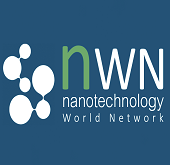Track 1: Neurological disorders
Neurological disorders are sicknesses of the brain, spine and the nerves that connect them. These disorders include Epilepsy, Alzheimer disease and other Dementias, Cerebrovascular diseases including stroke, Parkinson's disease, migraine and other headache disorders, brain tumors, multiple sclerosis, neuroinfections, traumatic disorders of the nervous system due to head trauma, and neurological disorders as a result of malnutrition.
The global stroke management market was valued at $19.2 billion in 2013 and nearly $20.2 billion in 2014. This market is expected to reach nearly $28.3 billion by 2019, with a compound annual growth rate (CAGR) of 7% from 2014 to 2019. Epilepsy is a chronic brain disorder. More than 50 million people are affected worldwide. Synchronous brain cell activity causes seizures and depending on the region of brain affected they will produce a range of behaviors. Annually NIH spends $30 billion for medical research, but ½ of 1% is only spent on epilepsy research. Dementia, including Alzheimer’s disease, is one of the biggest global public health challenges facing our generation. Worldwide, at least 44 million people are living with dementia this number is expected to double by 2030 and more than triple by 2050 to 115 million. Much of the increase will be in developing countries like Western Europe and North America. Already 62% of people with dementia live in developing countries. Parkinson’s disease is a dynamic neurological disorder that influences how the individual moves, including how they talk and compose. This disease is caused by low dopamine levels. Various useful treatments, utilizing therapies (physiotherapy), surgery and medications have recognized neurological disorders and changes in the patient group.
Track 2: Psychiatric Disorders and Behavioral therapy
Psychiatric Disorders are patterns of behavioral or psychological symptoms that affect various areas of life. Autism is a severe developmental disorder that damages the ability to communicate and interact. Schizophrenia is a brain disorder in which people understand reality abnormally. Dementia is an assembly of thinking and social symptoms that obstructs with daily functioning. The global autism spectrum disorders (ASD) market was valued at $346.2 million in 2013 and $360.9 million in 2014. This market is expected to grow to $412.7 million by 2019, a compound annual growth rate (CAGR) of 2.7%.
Track 3: Spine and Spinal disorders
Spinal diseases and spinal disorders often cause pain when bone changes put pressure on the spinal cord or nerves. They can also limit movement. Treatments differ by disease, but sometimes they include back braces and surgery. Spinal disorders are extremely common- it ranges from infants to the elderly; so also spinal trauma. Spinal health has gigantic impact on life. The Neurospinal Disorders track is about diagnostic and therapeutic services for patients suffering from all diseases of the spine and peripheral nerves. There are currently several clinical trials for spinal disorders. Spinal diseases and spinal disorders often cause pain when bone changes put pressure on the spinal cord or nerves. They can also limit movement. Treatments differ by disease, but sometimes they include back braces and surgery. Spinal disorders are extremely common- it ranges from infants to the elderly; so also spinal trauma. Spinal health has gigantic impact on life.
Track 4: Addiction & Psychopharmacology
Addiction is a condition wherein the person indulges himself in rewarding stimuli, regardless of adverse consequences. Psychopharmacology is the study of effect of drugs which lead to change in behavior. It implicates the modification at molecular level that can be observed in the terms of behavioral changes.
The global market for drugs used in mental disorders was $70.1 billion in 2012 and $68.9 billion in 2013. This market is expected to rise at a compound annual growth rate (CAGR) of 2.3% from 2013 to 2018 and reach $77.1 billion by 2018..
Track 5: Pediatric Neuropharmacology
Pediatric neuropharmacology deals with the neurological disorders in children such as seizures, delayed speech, weakness, or headaches. ADHD is also a neurodevelopmental disorder, which occurs at the age of six to twelve. The symptoms are excessive activity, inattention, disruptive or impulsive behavior.
Overall, about 40% to 50% of the patients treated in a typical pediatric neurology practice have epilepsy, while 20% have learning difficulties or developmental problems and 20% are suffering from headaches.
Track 6: Neurochemistry & Neurotransmission
Neurochemistry deals with the processes occuring within the nervous system and nerve tissues. One of these processes is neurotransmission, wherein, the interaction at the synapse occurs with the help of neurotransmitters such as Dopamine, Acetylcholine, Norepinephrine, Glutamate, Serotonin, Gamma-amino butyric acid (GABA), Endogenous opioids etc. Activity of ion channels assists neurotransmitter receptors to receive the signals. This mechanism is altered by the many drugs, as a treatment process of neurological disorders.
The global sales of drugs to treat progressive dementia with other neurological abnormalities expected to reach $537.2 million in 2012 and $913.7 million by 2017, at a CAGR of 11.2% over the five-year forecast period.
Track 7: Neuroinflammation
Neuroinflammation is a hot topic in contemporary neuroscience. Neuroinflammation is inflammation of the nervous tissue. It may be initiated in response to a variety of cues, including infection, traumatic brain injury, toxic metabolites, or autoimmunity. In the central nervous system (CNS), including the brain and spinal cord, microglia are the resident innate immune cells that are activated in response to these cues
Track 8: Neuroimmunology and Neuropathology
Neuroimmunology plays an important role in the development of pharmaceutical therapies for various neurological disorders. It constitutes of two complex systems of the body i.e. nervous system and immune system, malfunctioning of either or both can lead to various stress situations. Endocrine and nervous system combines to carry out various physiological activities and their interaction with each other is studied under Neuroendocrinology.
The global G protein, coupled receptors (GPCR) targeting drug market sharply fell in the last three years due to a series of patent expirations of blockbuster products. The market receded from nearly $111 billion to almost $100 billion with a -3.4% compound annual growth rate (CAGR) between 2010 and 2013. With the introduction of novel pharmaceuticals and newly appearing classes of drugs, research expects this market to reach $114 billion by 2018, a CAGR of 2.7% from 2013 to 2018.
Neuropathology is a substantial element of the fundamental study of disease and a foremost field in current medication and diagnosis. The diagnostics is done on the basis of brain/spinal cord tissue, which is received after biopsy. It has been an important tool in the diagnostics of prion disease and mitochondrial disease.
The global market for spinal and neurostimulation intervention products is expected to reach $15.8 billion by 2021 from $12.6 billion in 2016, rising at a compound annual growth rate (CAGR) of 4.5% from 2016 through 2021.
Track 9: Neuroethics and Neuroscience
With the advancements in the field of neuroscience, there are many social, ethical and legal issues which have come into picture. From clinical trial of drugs to the application of drugs, from reading of brain to the memory loss, in various psychiatric disorders, ethics are associated with every step. Neuroethics acts as a bridge between science and law. Neuroscience is concerned with all the fields such as structural, molecular, mathematical, computational; developmental which are required to understand brain and its functions. It is an interdisciplinary field which counts on all the aspects of science, required to study nervous system, spinal cord, networking and signalling processes.
The global market for neuromarketing technology reached $21.0 million in 2015. The market is expected to reach $22.0 million by 2021 from $50.3 million in 2016, increasing at a compound annual growth rate (CAGR) of 18.0% from 2016 to 2021.
Track 10: Neuro-Ophthalmology
Neuro-Ophthalmology is the amalgamation of visual system and nervous system. Study suggests that we use almost half of the brain for the vision related activities. Accurate measurement of motor reactions is vital for understanding the occulomotor system. Eye movements provide a window to fundamental brain functions, not only for topographic diagnosis of dysfunctions but also for the knowledge of normal brain function.
Track 11: Neurotoxicity of Drugs
Neurotoxicity is the result of exposure of the nervous system to the artificial or natural toxic agents. These agents can be heavy metals, drugs, radiations, pesticides or solvents. They work by disrupting the signalling process in between the neurons leading to a bulk of problems. Neurotoxicity has been reported as a major cause behind Alzheimer’s disease, which is a neurodegenerative disorder.
The global market for AD therapeutics and diagnostics by region should reach over $6.2 billion by 2020 from $4.4 billion in 2015, at a compound annual growth rate (CAGR) of 7.1% from 2015 to 2020.
Track 12: Neuronal Stem Cells
Neural repair works on the principle of replacing damaged/infected cells with the healthy cells. Neural stem cells play a vital role in regenerative medication as these are self-renewing and multipotent. These stem cells have proved to be a boon in case of neurological conditions, such as Huntingdon’s disease, Parkinson's disease and motor neuron disease.
The global stem cell market reached over $5.9 billion in 2015 and will grow from about $6.7 billion in 2016 to nearly $12.3 billion in 2021, registering a compound annual growth rate (CAGR) of 13.1% from 2016 through 2021.
Track 13: Neuro Plasticity
The human brain is one of the most complex things in the universe; it undergoes conditional changes through the entire lifetime of an individual. Later in the 20th century researchers found that the many aspects of the brain can be changed thus also known as Brain Plasticity.
Some factors can change the neural plasticity of brain through their effects emotionally mostly through thoughts, also can be altered by some serious injuries which can be helpful in certain cases for memory recovery or in case of brain damage and development.
Track 14: Neuro-stimulants
Neuro-stimulants act in a way to improve the neural functioning of the body; generally neuro-stimulants are used in case of fast and healthy recovery of any nervous breakdown or neural damage or brain damage.
The use of neuro-stimulants can either be positive or can also have an adverse effect, but counting on the positives the graph seems to increase for usage of neuro-stimulants, which is proving to be one of the very dependable drugs in the near future.
Neuropharmacology Market
It is necessary to focus on neuropharmacology and the use of neuropharmaceuticals to transform brain processes in the way of enhancing memory, mood, sensation, thinking and attention in people. The neuropharmacology market is segmented on the basis of technology, application, and region. The global neurovascular devices/interventional neurology market is poised to reach $2,370.4 Million by 2020 growing at a CAGR of 8.4% from 2015 to 2020. The global neuromodulation market is expected to grow at a CAGR of 11.2% from 2015 to 2020, to reach $6.20 Billion by 2020 from $3.65 Billion in 2015. North America dominated the neuroscience market in 2013, with revenue valued at over USD 9,500 million. Asia-Pacific is expected to witness the fastest growth from 2015 to 2020 due to the presence of high unmet medical needs, rising patient awareness regarding nervous system disorders, and rising healthcare expenditures in emerging economies of India and China.
Rise in incidence of cerebral stroke and other severe disorders such as Alzheimer’s disease, epilepsy, and Parkinson is is expected to fuel demand of neurology devices thereby driving industry growth. According to National Institute of Neurological Disorders and Stroke (NINDS), approximately 50 million Americans are affected due to these disorders leading to high economic & disease costs burden for medical expenses coupled with loss of productivity. The industry is expected to witness a considerable increase in demand for CNS related therapeutic procedures over the forecast period.
The global neurology devices market size was valued at USD 6.2 billion in 2014. Growing advancement in the field of imaging technologies and consequent development of neurosurgical endoscopy devices are likely to drive growth over the forecast period. Further increase in the number of neuroinformatics related projects for provision of efficient algorithms are also attributive factors expected to boost demand over the forecast period.
Epilepsy is a chronic neurological disorder characterized by unpredictable seizures. Epilepsy is the fourth most common neurological disorder that affects peoples of all age group. Seizures may be classified as focal seizures, generalized seizures, and other seizures. Key players in epileptic therapeutic market include Abbott Laboratories, GlaxoSmithKline plc, Cephalon, Inc., Johnson & Johnson, Pfizer, Inc., Novartis AG, Sunovion Pharmaceuticals, Inc.., Valeant Pharmaceuticals International, Inc., Sanofi S.A. and Shire.





